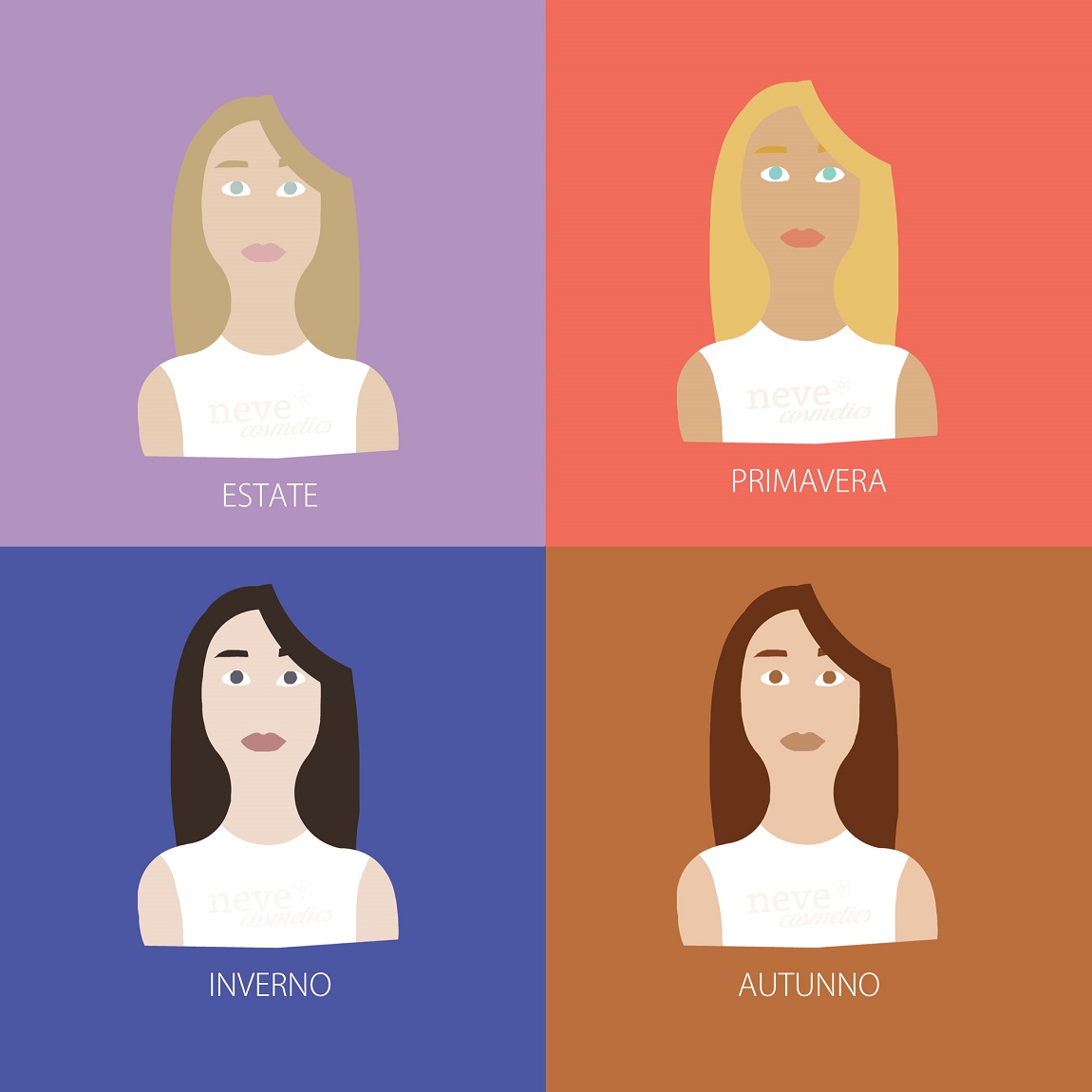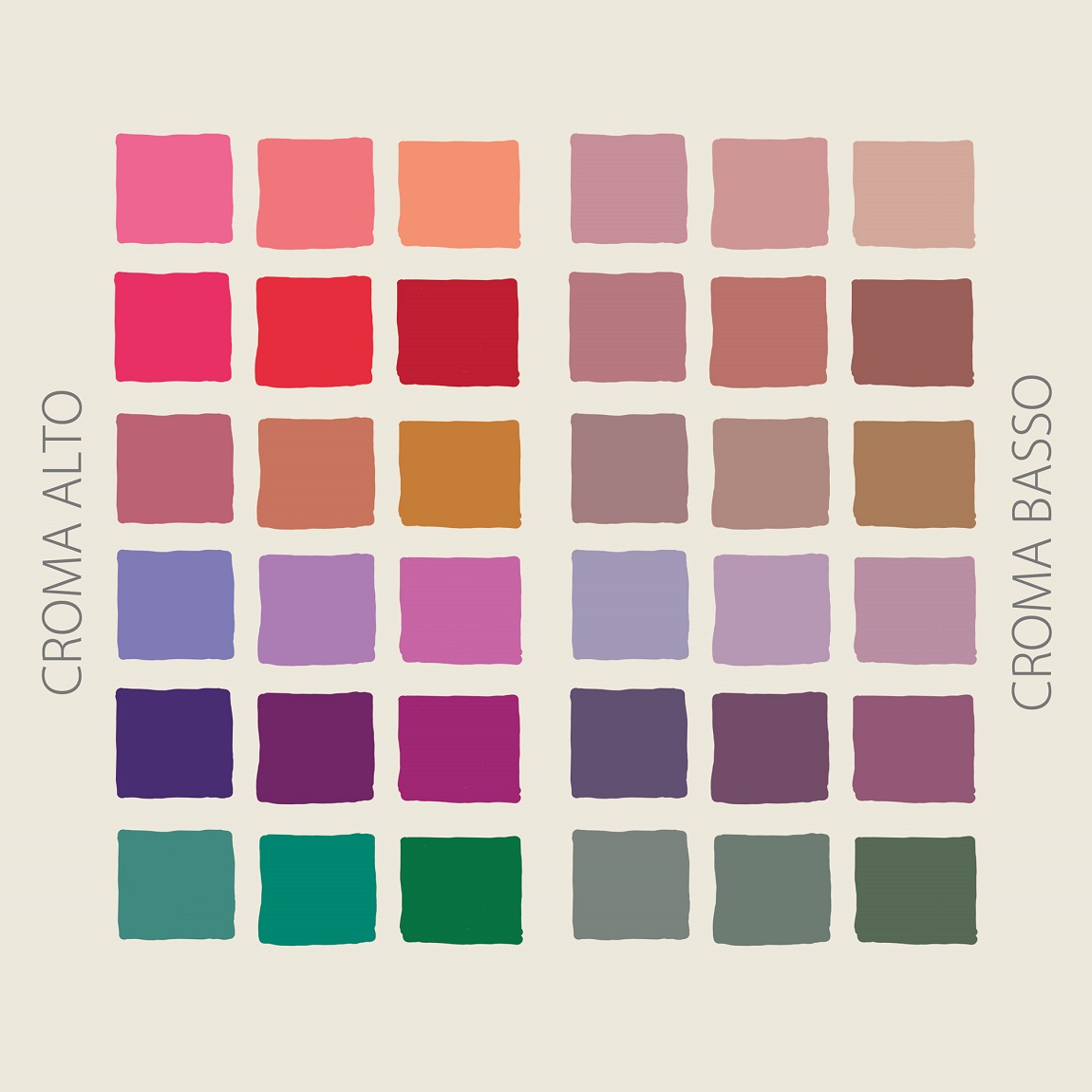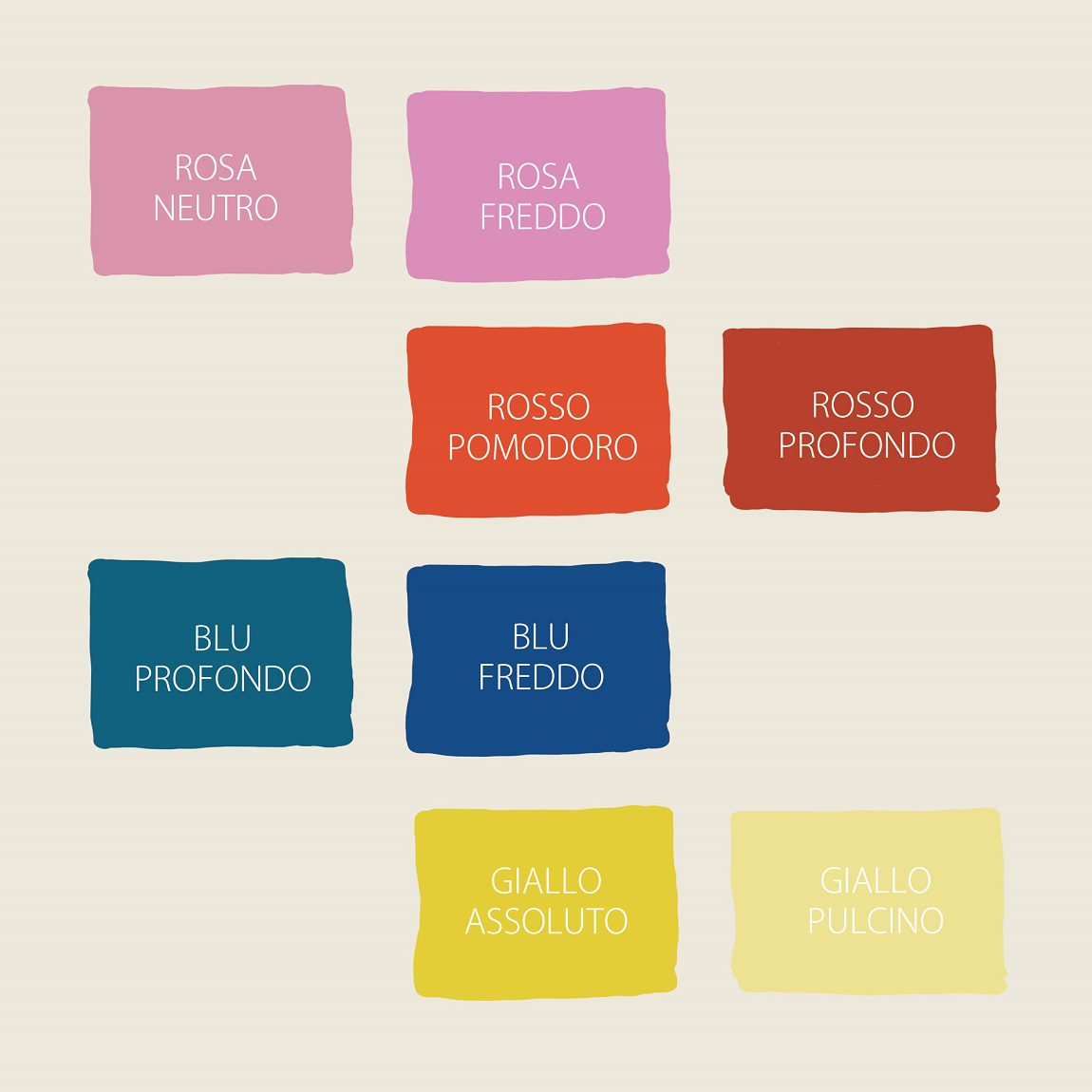All you need to know about Chroma in color analysis
We learned that each person reacts to color in a different way.
We discovered that if in the morning’s natural light we try different colors close to our face, we realize that not all the colors suit us and, if we have skin imperfections like pimples ,or an uneven complexion, certain colors may soften or highlight them.
We have learned that this concept is part of a discipline called color analysis and that painter Itten discovered the principles related to color and associated them to seasons.
Mr. Itten noticed that according to the natural skin color of each person, the face was emphasized, or on the contrary, penalized, by combining the various colors belonging to a certain chromatic category of the four seasons. Thus, he developed a theory according which everyone belongs to one of these four chromatic seasons:
Winter, Summer, Spring, Autumn.

On the basis of this theory, each of us has natural colors that, depending on the temperature (hot or cold ) and skin color ( the overall main skin color of a person ), reflect those found in nature in a given season.
The four-season system
The four-season system worked well for many skin types but not for all. It did not include several sub-categories and an additional step was made thanks to the contribution of another famous American painter Albert Henry Munsell (1858 –1918) famous for having created the homonymous color system.
After having studied the color theory and the four seasons, it was clear what was missing: the Itten system used only two of the three features of a color : temperature (hot / cold) and value (light / dark) .
At this point it becomes quite clear that the fathers of color analysis are all painters: only those who experience color every day as an art form (and makeup is an art form!) can understand its extraordinary complexity.
Mr. Munsell introduced a fundamental color principle: chroma. The difference between the pale blue of an autumn sky and the bright blue of the same sky in a clear spring afternoon. It’s still blue but with a very low chroma in the first case and a higher chroma in the second.

What is the Chroma
In color analysis the chroma establishes how much color (and by color we mean pure color percentage) a person needs to be visually improved.
Have you ever noticed how some people wear orange lipstick as it were lipbalm and others can barely wear a colored gloss?
Let’s take as an example of blonde girls with blue eyes and fair skin: some are enhanced by a coral lipstick while others by a mauve pink lipstick regardless of skin tone or tan..
The degrees of color intensity : why some girls can wear bright colors and others can’t?
There are various degrees of color intensity, not all of us can wear them. A color that is too intense on a person who does not have a medium-high chroma will put his face in the background, you will first notice the dress and then the person.
If, on the other way, the color has the right intensity, the face will look brighter and the complexion will appear even,without a lot of makeup, the pimples and the dark circles will be less visible, and the look more harmonious.
With th introduction of Chroma the seasons become 12
To summarize, Mr. Itten was taking into consideration only value (light/dark) and temperature (hot/cold).
Mr. Munsell introduced crhoma and the four seasons become 12 !
Let's examine in detail the classic four seasons Summer, Winter, Spring, Autumn :
Characteristics of the 4 season
Characteristics of the 4 seasons
- Winter : cold temperature, high chroma, cold and deep colors. It is enhanced by the three primary colors, plus white, black, silver, grays etc ... it also looks great in stark black/white contrasting patterns look great. In other words, the classic Chanel and Dolce &Gabbana took!
- Summer : cold temperature, medium-low chroma, cold and soft colors, not bright or pure like the winter ones. Summer is enhanced also by beautiful bright colors like Tiffany blue, fuchsia, watermelon red, navy blue, electric blue, (lots of blues, Armani style grays,( its famous greige typical color of this season) etc.
- Spring : warm colors, medium-high chroma. It naturally calls for warm and luminous colors (salmon, daffodil yellow, turquoise, apple green, light periwinkle purple, aquamarine, peachy pink, beige, coral. Gianbattista Valli, Etro, Custo include many of this seasons colors in their collections.
- Autumn : warm colors, medium-low chroma. It is enhanced by warm and rich colors, not extremely bright (with the exception of very hot ones like tomato red), gold, some green, military green, bottle green, forest green, moss green, burgundy, almost all warm browns, bronze, copper, ocher, orange. Roberto Cavalli, for example, loves this season colors, just think of the”animalier” (an animal print that can be worn easily only in this specific season)
Sub-categories of the 4 seasons: how they became 12
Sub-categories of the 4 seasons: how they became 12
Each season has three sub-categories that reflect the three main characteristics of the color referred to a person's general color:
1) Absolute Winter
2) Deep Winter
3) Bright Winter
4) Absolute Spring
5) Light Spring
6) Bright Spring
7) Absolute Summer
8) Light Summer
9) Soft Summer
10) Absolute Autumn
11) Soft Autumn
12) Deep Autumn
The Absolute Seasons
The Absolute Seasons contain the extrinsic characteristics of the season they belong to, and by absolute season we mean the seasons representing the categories with the totally warm temperature (Absolute Autumn, Absolute Spring) and totally cold (Absolute Summer and Absolute Winter). So they will be cold or hot, their temperature will always be defined, never fluctuating, never neutral.
They are four:
ABSOLUTE WINTER: cold temperature, high chroma, cold colors, pure and deep.
ABSOLUTE SUMMER: cold temperature, medium-low chroma, cold and soft colors.
ABSOLUTE SPRING: warm colors, medium-high chroma, bright , warm , rich colors.
ABSOLUTE AUTUMN: warm colors, medium-low chroma , warm, intense and rich colors.
The non Absolute Seasons
The non-absolute seasons are 8 and are more neutral seasons than the absolute 4.
Neutral in Armocromia refers to a color whose temperature is balanced and does not immediately catch the eye as hot or cold.
The absolute seasons are clearly cold or clearly warm. The other sub-seasons are neutral, and are described as such

What does neutral mean in this case?
It means that if, for example, you are Autumn but you do not belong to an absolute season (which in the case of Autumn is Absolute Autumn) but you are Deep Autumn you will be enhanced by more neutral colors than those of Absolute Autumn .
One of the colors that enhances the Absolute Autumn is the tomato red : a very warm red. Intead, a red suitable for Deep Autumn will not only tend to bedeeper but will be also more neutral and less warm.
The same goes for the winter blue. Absolute winter blue will be much colder than the blues that enhance a Deep Winter.
Another example? The pink for an Absolute Summer is colder than a pink suitable for a soft summer type ! The Soft Summer pink will be more balanced than the cold Absolute Summer pink.
Finally, yellow for an the Absolute Springwill be decidedly stronger and warmer than the pale yellow color perfect for Light Spring! Article by Giusy de Gori, specialist in color analysis.


